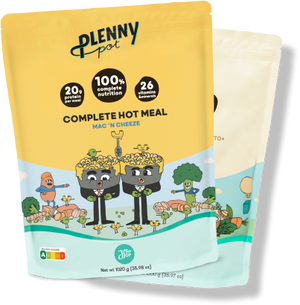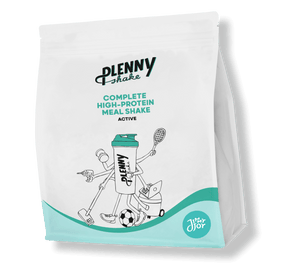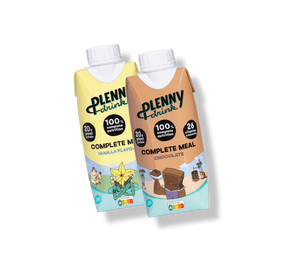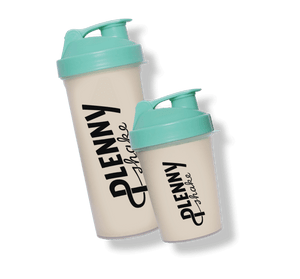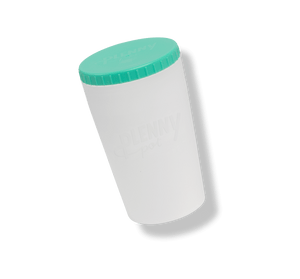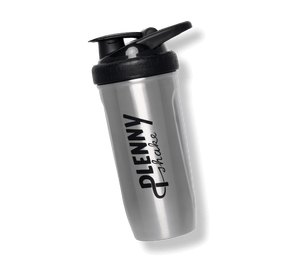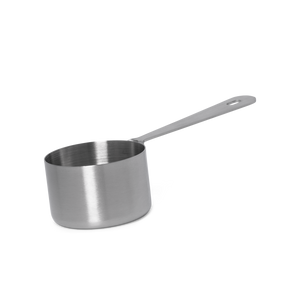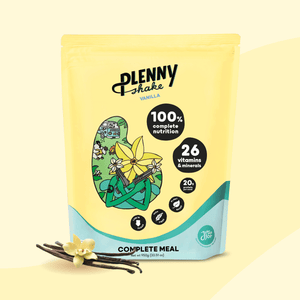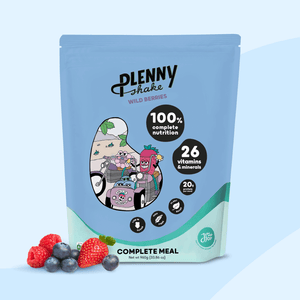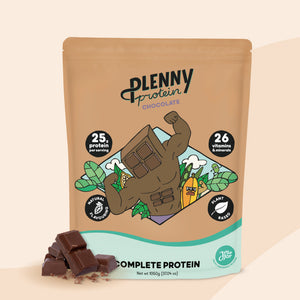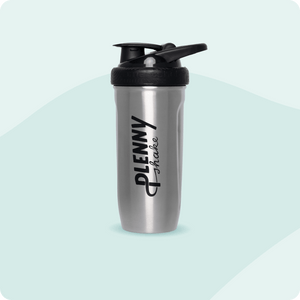In the world of protein, there are many options. Just like humans, proteins come from different backgrounds and have had different life experiences. But most of the time, they have the best characteristics in common: building and repairing tissue.
Since there are thousands of different protein options - each from different sources and offering different quantities of protein per serving - we thought it was about time to shine some light on the world of plant protein versus whey protein to help you discover what’s important when looking at protein, and deciding what’s best for you.

Two important factors when looking at protein
Besides considering your daily recommended protein intake and estimated requirements, important attributes when looking at the nutritional value of proteins are the protein quality itself and the amino acid content (what’s really inside the protein).
The protein quality is determined by the digestibility and the amino acid composition.
Digestibility
To allow the use of proteins by the body, the longer components called polypeptides, tripeptides and dipeptides need to be broken down by enzymes into amino acids, for their correct absorption and usage [1]. We hear you thinking: “what the **** did I just read?”. No panic. Just imagine a very long necklace with beautiful pearls (a.k.a protein). Enzymes are like scissors that cut the necklace into large pieces with two, three, or more pearls (dipeptide, tripeptide, or polypeptide). If enzymes continue cutting only single pearls are what’s left from the necklace, these pearls represent the amino acids that will eventually be absorbed by the body. Makes sense, right?
Every source of protein has a different amino acid profile. These amino acids — or how the protein is broken down when you digest it — determine its qualities.
Amino Acids
So, proteins are made out of a chain of amino acids (necklace with pearls). Amino acids are put into two groups. The nonessential amino acids and the essential amino acids. More than half of the amino acids are non-essential amino acids. Meaning that the body can synthesise them for itself. Normally food delivers these amino acids but when food does not deliver them, the body can produce them itself. Contrarily, there are nine essential amino acids that the human body cannot make at all or cannot make in a sufficient quantity that meets one’s needs. Meaning that these nine amino acids need to be supplied by the diet. If a food product contains all nine essential amino acids, it’s considered a complete protein source [2].
Whey protein
Ever made cheese or heard of cheese curd; those springy rubbery textured moist pieces of curdled milk? (Dutchies you should know!) And you know that to make cheese, milk is separated into solids and liquids? That watery liquid part is called whey.

Whey mostly consists of whey protein, lactose (milk sugar), vitamins (mostly B-vitamins), and minerals. Once the whey is separated, it’s heated, micro-filtered, pasteurised, and dried. Then, sweeteners and preservatives are added to produce what we recognise as protein powder [3]. From a sourcing standpoint, whey protein is derived from dairy and therefore not vegan. Whey is a complete protein source with moderate to high levels of most essential amino acids. It’s low in calories and high in protein which makes it a good muscle supporter and recovery enhancer [4]. This is all great unless you are one of the ever-increasing population of people with allergies to milk substances or if you’re following a plant-based diet [5]. Another unflattering thing of whey includes: flatulence – the lactose can cause flatulence and excessive consumption can lead to diarrhoea and bloating [6]. Luckily plants always have our back.
Plant Protein
Plant-based protein can be a great alternative for whey protein, but variation is key since several plant proteins tend to be deficient in some amino acids [7]. You could just simply choose whey because it’s a complete protein source or if you don’t feel like becoming a nutty protein professor that mixes all different sources of plant-based protein together in order to get the perfect set of amino acids. We won’t judge (out loud.) But it’s a mistake to think no plant sources provide complete proteins. Soy, pea, and hemp protein are just some of the complete plant proteins out there — which makes them just as convenient as whey when it comes to getting your body the amino acids it needs [8]. Generally, plant-based proteins come with a higher price tag due to whey being mass-produced, but you do get what you pay for.
Nutrient density
Despite being packed with protein, whey powder does not contain much more. It does contain B-vitamins and other vitamins & minerals in small amounts. Sadly, whey protein is heavily processed under high temperatures which significantly degrades most micronutrients and naturally occurring digestive enzymes [9].

Plant protein has a higher nutrient density. Plant protein comes from plants that contain many other essential vitamins, minerals, fiber, and antioxidants that fuel the body [10]. Of all plant proteins, soy protein powder earns the highest mark for its protein quality. It’s the only plant protein with concrete data that it contains all essential amino acids [11]. Some components in soy have been noted to demonstrate lipid-lowering effects, increase LDL-cholesterol oxidation, and have beneficial effects on lowering blood pressure.proteins [12,13].
Digestion
Since whey protein contains lactose, it requires the digestive enzyme lactase to break it down. As we age, our small intestine secretes less lactase, making it difficult for our bodies to digest lactose [14].

Also, did you know that 65 percent of us suffer some degree of lactose intolerance?! [5]. If your stomach ever felt tight, swollen, and full like you’ve eaten a whole pie by yourself after consuming whey, you might be in this camp. Plant sources, on the other hand, contain fiber and enzymes which actively ease digestion and absorption [15].
Muscle Building and Recovery
You may turn to protein because you want to step up your workout regime. BCAAs can help you with this. BCAAs, short for branched-chain amino acids, are three essential amino acids that help support protein synthesis [16]. These are leucine, isoleucine, and valine and known for promoting muscle growth. The BCAAs are found in both whey and some plant-based sources like soy, oats, and lentils [17]. They're also vital in the process of building muscle mass. While there has not been as much study into plant-based proteins compared to whey, the studies that have been done have shown promising and competitive results. A clinical study in 2013 showed that brown rice protein was equal to whey protein when it came to; building muscle, gaining strength, and aiding in recovery [18].
Environmental Impact
Maybe you’ve missed it, but by now it’s made very clear that plant protein is more sustainable than protein from dairy or animal. If you’re not convinced yet, a brief Google search will show you the unsustainable impact of the meat and dairy industries on the environment, showing the need for alternatives.

Plant-based protein sources require little-to-no processing. They do require some processing, but generally less than it takes to create a container of whey protein that’s derived from milk that comes from a cow - a cow that needs to be kept alive with crops - crops that need to grow, and so on… You get the idea. Plants just require way less land and water. Also, the CO2 emissions of plants are lower. In 2010 these emissions were estimated to be responsible for 0.4-0.6 Gt CO2 eq. per year [19]. These CO2 emissions are based on the indirect effects of various machinery such as tractors and irrigation pumps. The climate impact of milk is higher because of the greenhouse gas Methane. Total emissions range from 0.8-1.4 kg CO2 eq. per kg milk [20].
Sure, it’s still up to you to decide what protein suits you best. When comparing whey protein vs. plant protein, you have to think about which fits in best with your lifestyle.
Whey proteins are complete proteins on their own and the prices tend to be a little lower. But if you care about the environment and fuelling your body with other essential nutrients, higher nutrient-density plant protein will be your go-to protein.
Protein in Jimmy Joy products
At Jimmy joy, we stand for complete, easy, and affordable food with minimal impact on the planet, to give you more time and energy to do what you love. That’s why we chose plant protein. Every Plenny meal contains all nine essential amino acids your body needs. There’s not just one source of protein in our products, there’s multiple: oats, soy and flaxseed create an even more diverse nutrient profile.
Sources:
- J. Gordon Betts, et al (2019). Anatomy & Physiology. Chapter 23: The Digestive System. 160 23.7 Chemical Digestion and Absorption: a closer look. https://opentextbc.ca/anatomyandphysiology/chapter/23-7-chemical-digestion-and-absorption-a-closer-look/
- Michael J. Lopez, et al (2020). Biochemistry, Essential Amino Acids. https://www.ncbi.nlm.nih.gov/books/NBK557845/
- A. Lopes, et al. (2019). Cheese whey. https://www.sciencedirect.com/topics/agricultural-and-biological-sciences/cheese-whey
- J. Hoffman, et al (2004). Protein, which is Best? https://www.ncbi.nlm.nih.gov/pmc/articles/PMC3905294/
- L. Harrington, et al (2008). A re-appraisal of lactose intolerance. https://pubmed.ncbi.nlm.nih.gov/18822024/
- Michael F. Picco, M.D. (2020). Lactose Intolerance. https://www.mayoclinic.org/diseases-conditions/lactose-intolerance/symptoms-causes/syc-20374232
- F. Mariotti (2019). Dietary Protein and Amino Acids in Vegetarian Diets. https://www.ncbi.nlm.nih.gov/pmc/articles/PMC6893534/
- S.H.M Gorissen, et al (2018). Protein content and amino acid composition of commercially available plant-based protein isolates. https://www.ncbi.nlm.nih.gov/pmc/articles/PMC6245118/
- N.K. Lee (2015). Improved Functional Characteristics of Whey Protein Hydrolysates in Food Industry. https://www.researchgate.net/publication/280243696_Improved_Functional_Characteristics_of_Whey_Protein_Hydrolysates_in_Food_Industry
- J. Slavin, et al (2012). Health Benefits of Fruits and Vegetables. https://www.ncbi.nlm.nih.gov/pmc/articles/PMC3649719/
- J. Barrett (2006). The Science of Soy: What Do We Really Know? https://www.ncbi.nlm.nih.gov/pmc/articles/PMC1480510/
- S.M. Potter (2000). Soy—new health benefits associated with an ancient food. Nutrition Today 35, 53-60.
- J.A. Gwin, et al (2019). Higher Protein Density Diets Are Associated With Greater Diet Quality and Micronutrient Intake in Healthy Young Adults. https://www.frontiersin.org/articles/10.3389/fnut.2019.00059/full
- N. Silanikove, et al (2015). The Interrelationships between Lactose Intolerance and the Modern Dairy Industry: Global Perspectives in Evolutional and Historical Backgrounds. https://www.ncbi.nlm.nih.gov/pmc/articles/PMC4586535/
- S. Devi, et al (2018). Measurement of protein digestibility in humans by a dual-tracer method. https://academic.oup.com/ajcn/article/107/6/984/4996537
- E. Teixeira-Lemos (2016). Nutraceuticals; New trends in food science: the use of nutraceuticals as an antiinflammatory therapeutic tool in exercise, pages 669-714. https://www.sciencedirect.com/science/article/pii/B9780128043059000178
- USDA (2020). FoodData Central. https://fdc.nal.usda.gov
- J.M. Joy, et al (2013). The effects of 8 weeks of whey or rice protein supplementation on body composition and exercise performance. https://www.ncbi.nlm.nih.gov/pmc/articles/PMC3698202/
- H. Ritchie (2017). CO₂ and Greenhouse Gas Emissions. https://ourworldindata.org/co2-and-other-greenhouse-gas-emissions
- U. Sonesson (2009). Greenhouse Gas Emissions in Milk Production. http://www.klimatmarkningen.se/wp-content/uploads/2009/12/2009-3-milk.pdf

 Everything You Need In One Meal
Everything You Need In One Meal
 Stay Full For 3-5 Hours
Stay Full For 3-5 Hours







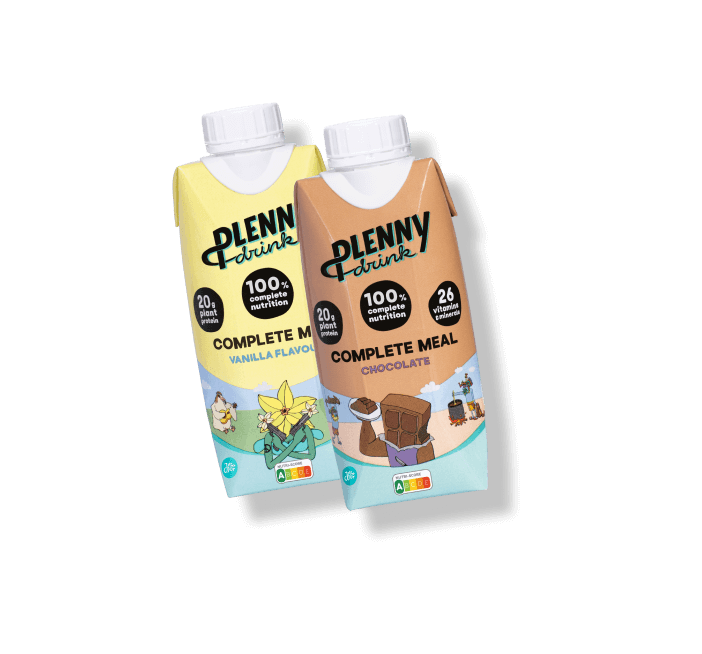
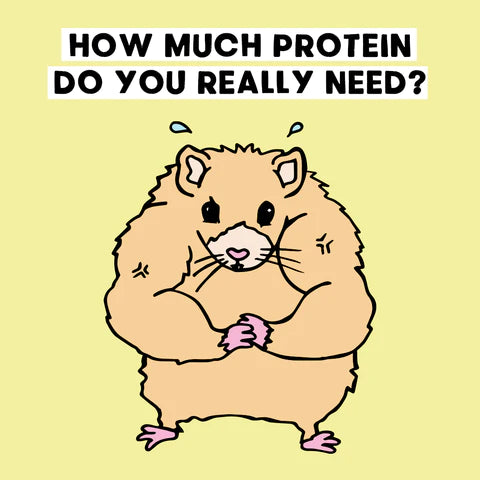











 Product added to cart
Product added to cart



